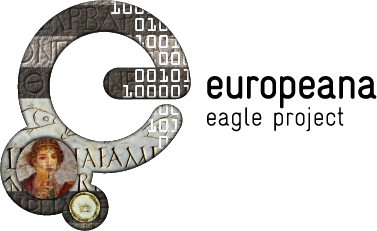In fact, this is not an easy task. The preferred labels are not in a single language, and the value that one looks for (e.g. the equivalent of type “funerary”) can be expressed in any of the languages in use of the content providers of EAGLE. In our specific case, for example, the language is Latin: if we pick the type “Sepulcralis” from the Advanced Search options we can extract all the inscription that are described as e.g. “funerary” or “Grabinschriften”.
At the moment, such a query returns 56220 results. It might be interesting to compare this datum with the numbers of all other types attested (or at least the major ones, like e.g. “votive”, “honorary inscriptions” etc.). We could display a pie chart that can easily be inserted into this story!
Among the results that are returned, the inscription dedicated by the veteran Marcus Aurelius Alexander to his wife Cavia Ingenua and sons stands out immediately as a particularly striking example.
The text, as edited in the Epigraphic Database of Heidelberg, reads:
It may be noted that the text reported in the database Ubi erat lupa (which is itself a content provider of EAGLE, though this inscription is at the moment either not included in the searched collection or not recognized as an alternative edition of the same text) reads
A few important things stand out by comparing the two versions:
- in the Lupa’s edition the word for wife, is written coniugis, followed by an exclamation mark that marks it as an error; the correct form of the dative singular would have been coniugi, which is in fact the text read by the editors of Heidelberg
- note that the editors of Lupa and Heidelberg give to the protagonists of this inscription quite different names!
Why does this happen? What are the reasons? Who is right and why? In order to solve these interesting puzzle, we must turn to our friends the epigraphists…
